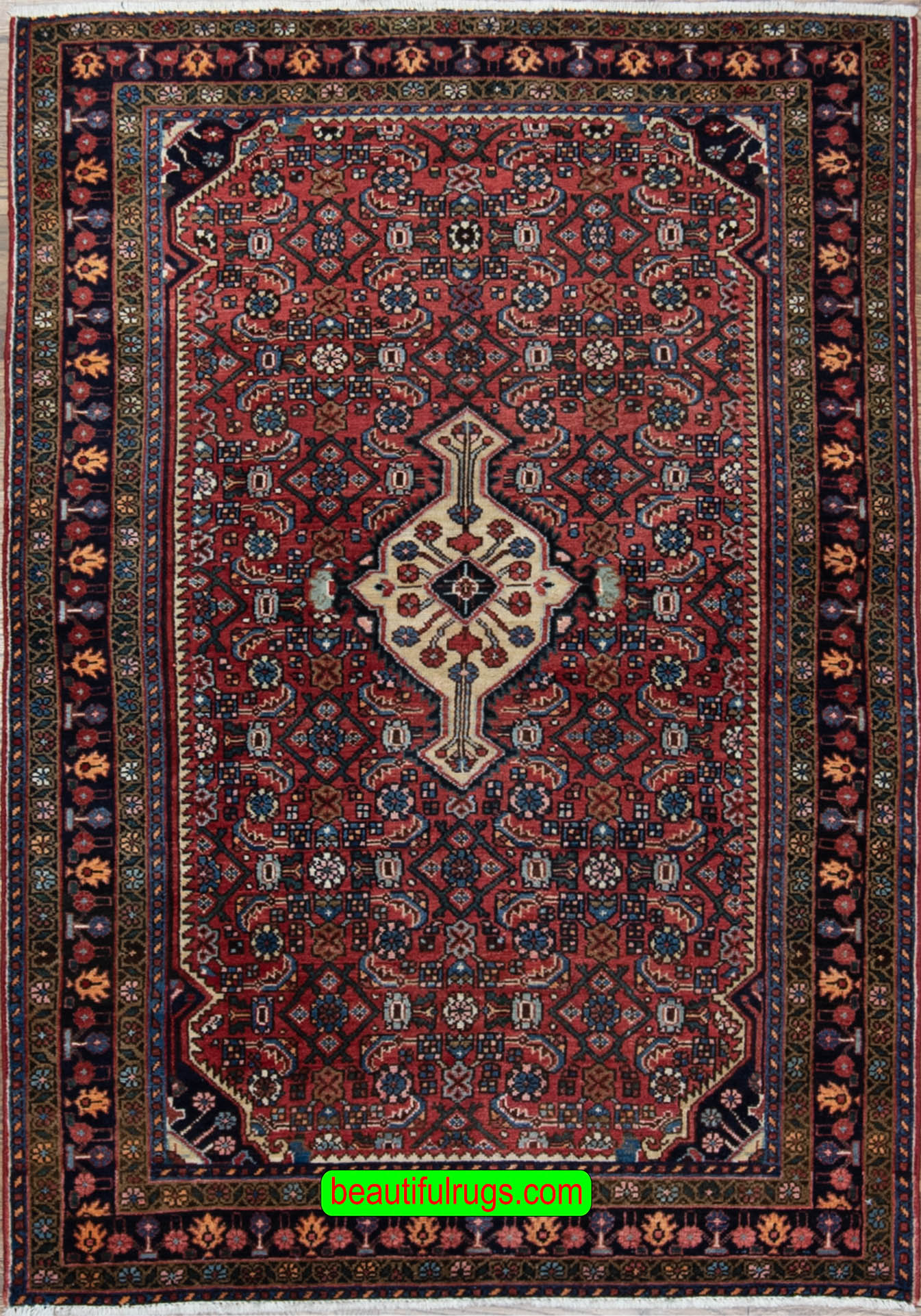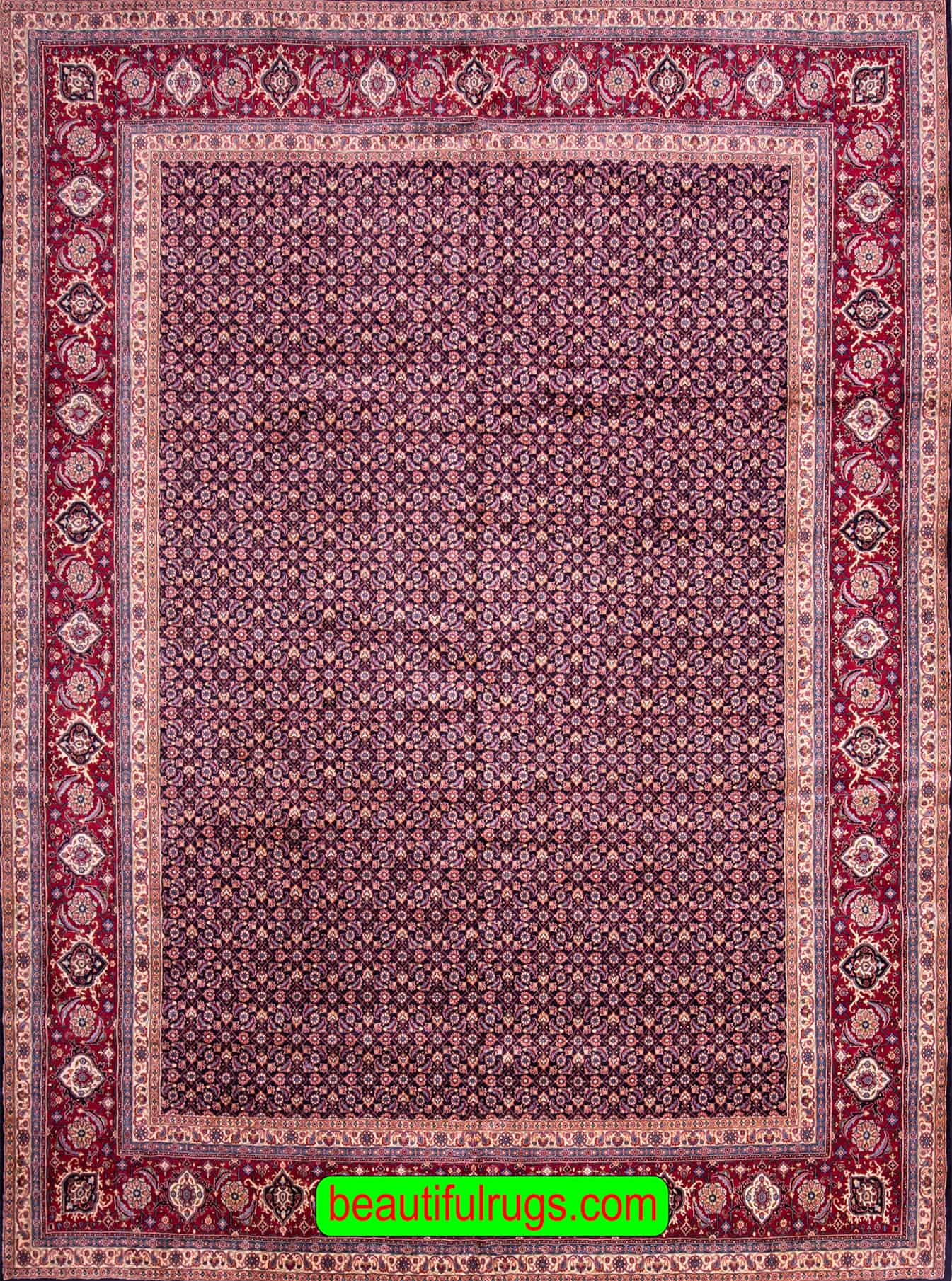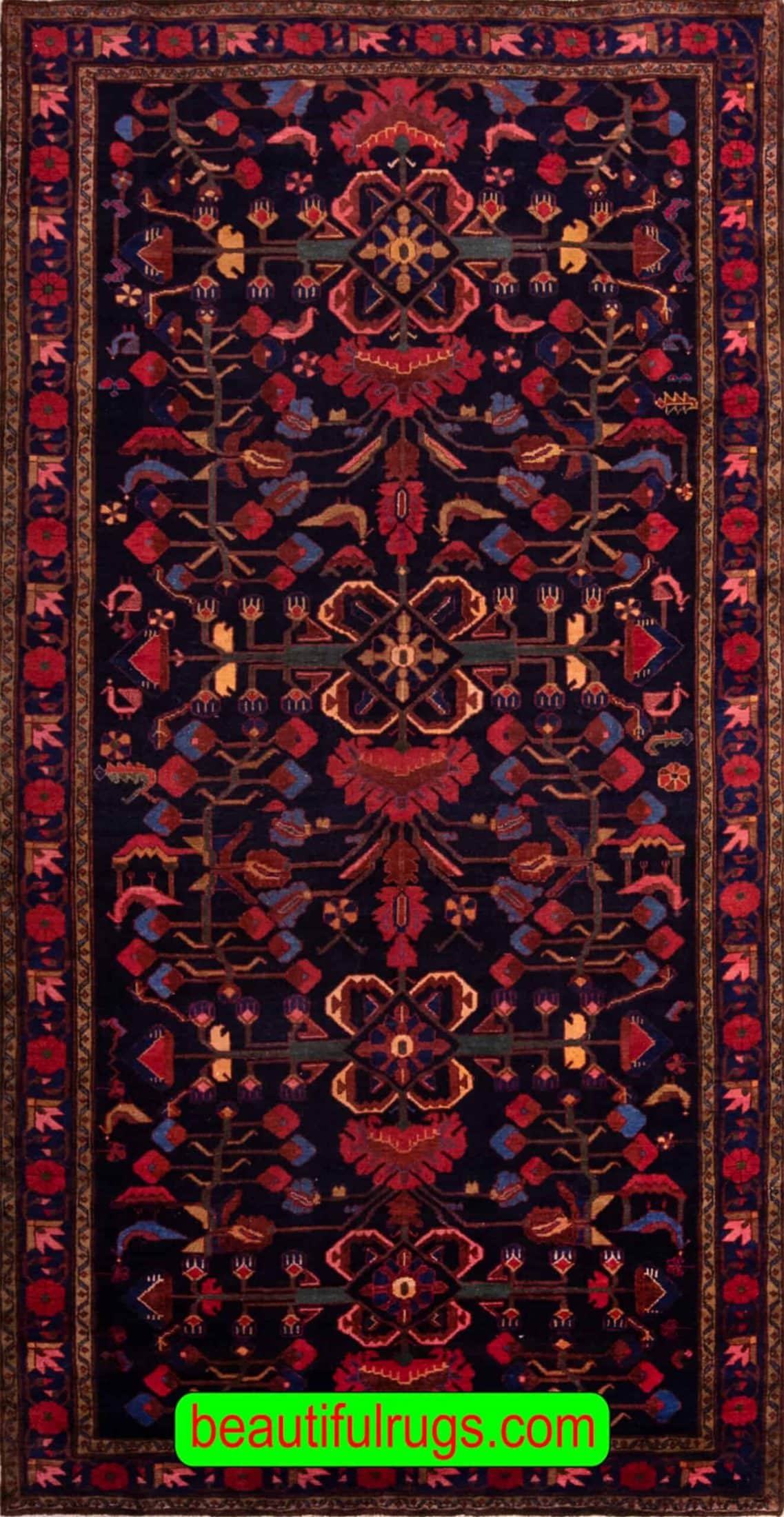Hamadan Rugs, Antique Persian Hamadan Rugs
Hamadan (or Hamedan) rugs originate in one of the oldest known civilized areas of western Iran. Its largest city, Hamedan (once known as Ectaban), became the capital of the ancient Parthian empire. Hamadan has a long history as a crossroads for trade and handicrafts on the Silk Road, and Marco Polo described the city in his travels.

The city’s many historic monuments attract tourists in the summer, and the city serves as a trade center for rug makers from the surrounding villages and towns. Kurds are residents in many of the villages and towns of this area, and each town or village in the region has become identified with a certain design. Each of these areas has its own rug-making tradition, so there is a very wide variety of Hamadan rugs. Geometric and rectilinear patterns predominate in Hamadan rugs that rely on bright, primary colors, such as red, blue, and ivory, and the Herati design pattern (originating from the town of Herat) with a rosette in a diamond with leaves on its four sides. Doubling, tripling the central medallion or adding pendants to it is a commonly seen design feature of Hamedan rugs. These rugs are coarsely woven with densities from 40 to 100 knots per square inch.
Hamadan Rugs for Sale
Hamadan is used to collectively refer to a collection of various types of carpets made in the Hamadan region. The whole region is made up of more than 1500 villages around the city of Hamadan, and each of the villages produces 2 or more different styles of rugs. What is particularly interesting is that even though all the rugs were produced in that one single rug-weaving region, the materials used to make them varied widely because the wool was obtained from sheep all over the region. Their designs also vary because of the varying artistic and cultural influences in each village. Moreover, the artisans had their own distinct knotting techniques, with each varying from the other in terms of pattern, quality, and density. Nahawand and Hosseinabad are some of the finer and more intricate varieties of rugs from this region, while the simpler and coarser rugs are grouped under Hamadan. You can easily recognize Hamadan rugs by their distinctive sizes and patterns. While geometric patterns are more popular in knotting, you will also find exquisite floral patterns.
Traditionally, all Hamadan rugs were made using handspun yarn, which provided a durable surface and a beautiful color gradient. But with increasing popularity, they also began to use industrially produced yarn, which resulted in carpets that were more economical and easily available to the masses. In the case of the latter, the colors used to dye the yarn are not too vibrant or elaborate. This is why when you shop for Hamadan rugs, you can easily distinguish between the two types by paying attention to the color and the price.
Antique Hamadan Rugs
When you look at the Hamadan carpets, you will find that the two predominant colors are blue and red. The blue was derived from the indigo plant, while the red came from the madder root. Madder was once the most valuable plant used for creating dye in Iran and other rug-making countries like India.
Vintage Hamadan carpets, called Shahr-baff (Shahr means city and baff means knot), are truly unique and stunning products. This is because they were constructed using only the finest materials, a vibrant palette of colors, and a special weaving technique that made them durable. Known for their robustness, these rugs make for amazing everyday carpets. Structurally, Shahr-baff rugs are quite similar to handwoven Bidjar rugs but are rarely found in the market today. They are precious pieces of art that are devoid of any modern influences.
Owing to their strength and robust build, Hamadan rugs are said to be good utility rugs, as they can withstand heavy use.
If you are looking for a rug for a high-traffic area in your home, such as the hallway or the living room, Hamadan rugs are the perfect choice.
Shop Hamadan Rugs at Beautiful Rugs
Beautiful Rugs has in its inventory a Hamedan rug with a Zelesoltan (or Zei-i Sultan) design, an allover design of blue or ivory vases with stylized yellow floral sprays. Each vase is embedded within two diamonds of stylized rosettes. Zell os-Soltan, which means the shadow of the emperor, was the title of the Qajar prince Mas’ud Mirza in the late 19th and early 20th centuries in southern Iran.
STYLES
Showing all 6 resultsSorted by latest
-
5×7 Area Rugs, Persian Hamadan Wool Tribal Area Rugs
$1,095Original price was: $1,095.$985Current price is: $985.Add to WishlistAdd to Wishlist -
4×6 Rug, Persian Hamadan Rug, Tribal Rug Wool Rug
$1,580Original price was: $1,580.$1,099Current price is: $1,099.Add to WishlistAdd to Wishlist -
Add to WishlistAdd to Wishlist
-
10×12 Rug, Persian Hamadan Rug, Herati Rug
$14,200Original price was: $14,200.$9,950Current price is: $9,950.Add to WishlistAdd to Wishlist -
5 Foot Wide Runner, Hamadan Runner, Persian Runner
$2,498Original price was: $2,498.$1,999Current price is: $1,999.Add to WishlistAdd to Wishlist -
Add to WishlistAdd to Wishlist







